by Mike Gulett –
There’s a certain poetry in the sound of a well tuned V12 engine and the ticking of a finely running chronograph watch. One is a beautiful sound and motion; the other is quiet and elegant precision. Yet both are stimulating. For collectors, cars and watches are not just machines — they’re mechanical expressions of beauty, heritage, and identity. The best of them turn time and motion into something magical.
Car collectors and watch collectors are drawn to mechanical mastery and beauty — the joy of seeing gears, valves, and pistons (or escapements and balance wheels) working in harmony. Plus the beauty and craftsmanship of a manmade object.
A Bizzarrini GT 5300 or a Shelby GT350 is an orchestra of moving parts, the product of human ingenuity expressed through metal and technical expertise. Likewise, a Patek Philippe perpetual calendar or a Breitling Navitimer transforms the same principles of mechanics into wrist-sized mechanical sculpture.
Both appeal to the same sensibility: that a manmade creation born of design, engineering and craftsmanship can transcend utility and become art.
The right car or watch is a time capsule — not just of technology, but of the values, style, and optimism of its era. A 1960s Jaguar E-Type evokes London in the Swinging Sixties just as surely as a vintage Omega Speedmaster recalls the dawn of the Space Age (one did go to the moon). Both objects link us to a moment when design was daring and progress felt unbounded.
Provenance deepens the magic. A Shelby Cobra driven at Le Mans, or a Rolex Daytona once worn by Paul Newman (or even the same model as the Newman Rolex Daytona), carries a trace of its owner’s mythos. It’s the same impulse that drives people to collect first-edition books or vintage guitars — the desire to hold a piece of history in your hands.
Both endeavors have evolved from private passions into serious markets. Collectors know the thrill of the chase, but also the reality of appreciation — and maybe speculation.
In cars, value follows rarity, originality, and performance pedigree. An Iso Grifo or an early Porsche 911 Carrera RS can rise or fall with generational taste. Watches follow similar rules — production numbers, condition, provenance, and desirability drive values.
Yet the economics and time investment differ. Cars are large, high-maintenance assets — they need garages, transport, and care. Watches are compact and liquid — they can be traded or worn daily, yet still hold immense value. A Ferrari or Lamborghini V12 engine may cost as much to rebuild as the cost of several vintage watches.
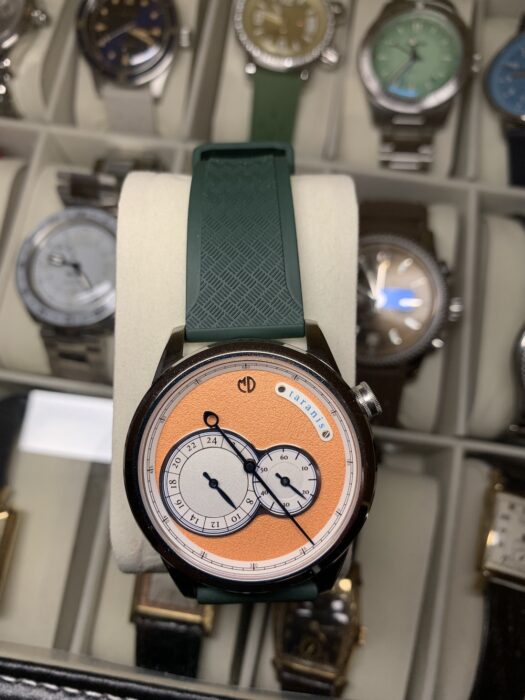
Martin Design (MD) Taranis model (a recent addition to my collection) – Designed and assembled in Ireland with a Japanese movement
Both markets, however, share cyclical rediscoveries: forgotten marques like Iso Rivolta (Italian GT cars) or Vulcain (Swiss watches) suddenly rise when tastemakers reappraise them. Collecting, after all, is about recognizing significance before the crowd does.
Ask any collector why they fell in love with a car or a watch, and the answer rarely involves money. It’s about emotion — the way something feels, sounds, or simply is.
Driving an Aston Martin or winding a mechanical chronograph are both rituals of engagement. The gear shifting and the winding crown are tactile connections to another age — gestures that remind us that craftsmanship once mattered more than convenience.
A watch hums quietly on the wrist; a car roars down the coast. Yet both stir the same sensation of being alive, of time and motion intertwined.
Both collecting worlds have their own social rhythms. Car collectors converge at Pebble Beach, Goodwood, or a weekend morning Cars & Coffee. The experience is visual and communal — stories traded beside gleaming fenders.
Watch collectors gather in quieter circles — boutique events, online forums, auction previews. Their conversations revolve around reference numbers, calibers, and dial variations. One group talks horsepower and coachbuilders; the other speaks of escapements and patina.
Yet the overlap is striking. Many of the world’s great car collectors are watch enthusiasts, and vice versa. Both communities celebrate craftsmanship, heritage, and taste.
In an age where everything seems to be turning digital — electric vehicles replacing gas powered engines, smartwatches replacing mechanical watches — car and watch collectors stand as guardians of something human and tactile.
They remind us that perfection isn’t the point — mechanical beauty lies in imperfection, in the heartbeat of a movement or the sound of an exhaust. These objects connect us to a time when craftsmanship and imagination defined progress. If you want the most accurate time, look at your smart phone not the cool mechanical watch and if you want steady and reliable transportation then a 1960s sports car may not be a great choice.
Ultimately, both collecting worlds are about more than metal and gears. They’re about preserving the artistry of motion and time — the shared belief that the best machines are not just built, but felt.
In the end, the car collector and the watch collector speak the same language: one of balance, proportion, rhythm, and soul. Whether it’s the tick of a chronograph or the rumble of a V8 echoing along the Big Sur coast, both remind us that the most beautiful machines are those that make us feel the passage of time — and wish it would never end.
Let us know what you think in the Comments.
I have been a watch collector for many years but this year I have become obsessed with a new breed of watches made by independent makers from all over the world (as my wife and friends know all too well). These small makers use mechanical movements made by larger companies from Switzerland, Japan or China. This is not unlike the European car companies (like Iso, De Tomaso and Bizzarrini) using engines made by American companies. The engine is a complex machine as is a mechanical watch movement and not all companies have the ability to create their own.
I have obtained several new watches including this one shown below that arrived just this week. It is a beautiful work of art for the wrist designed and assembled here in California using a Swiss made movement.
Research, some text and some images by ChatGPT 5.
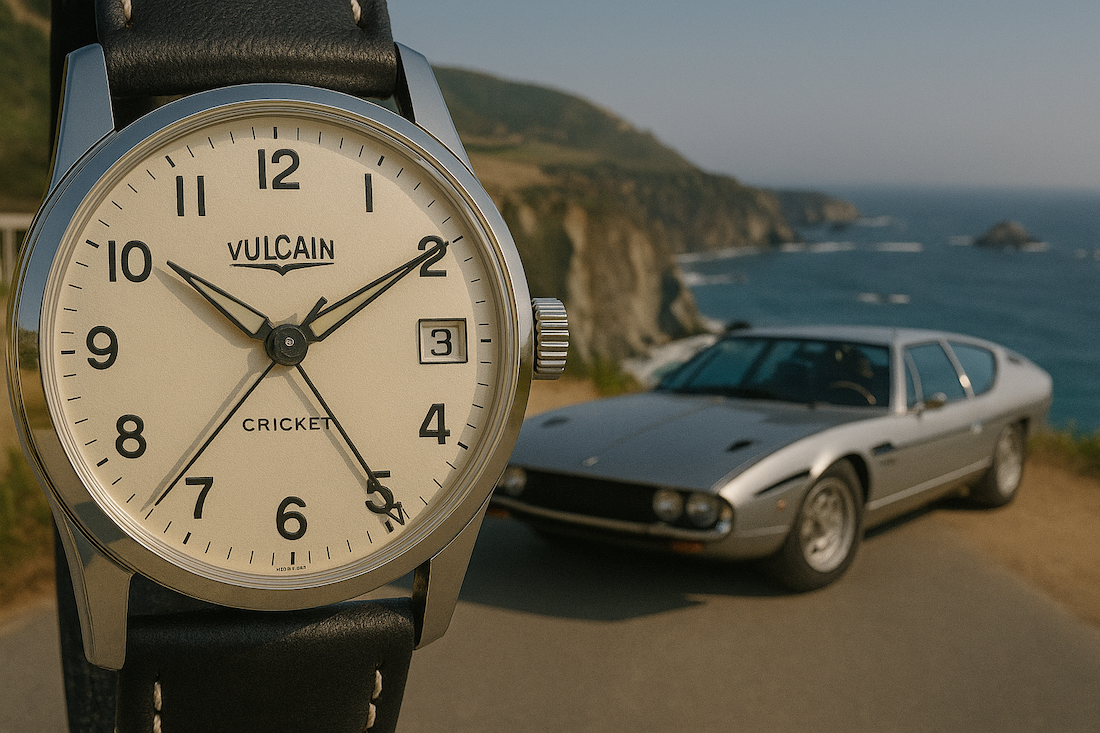
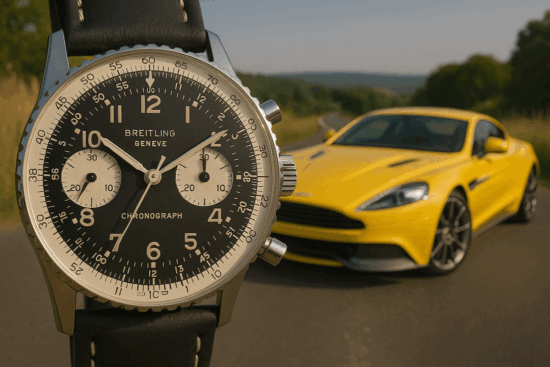
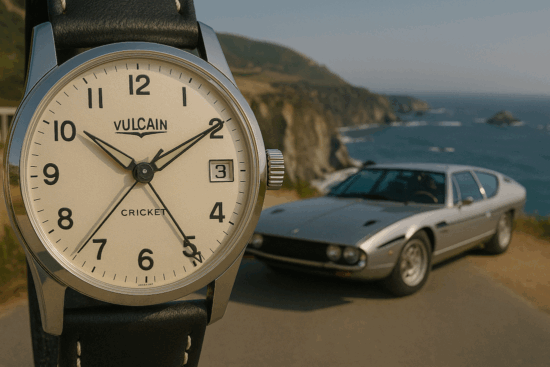
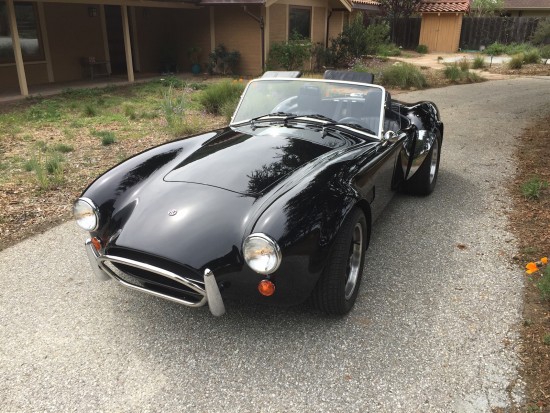
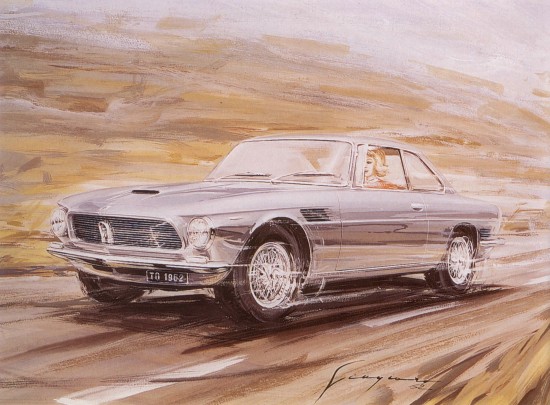
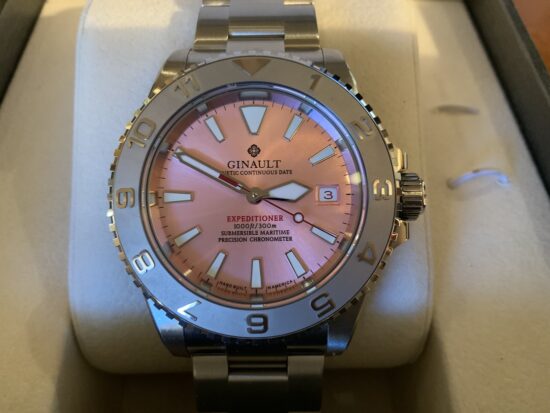
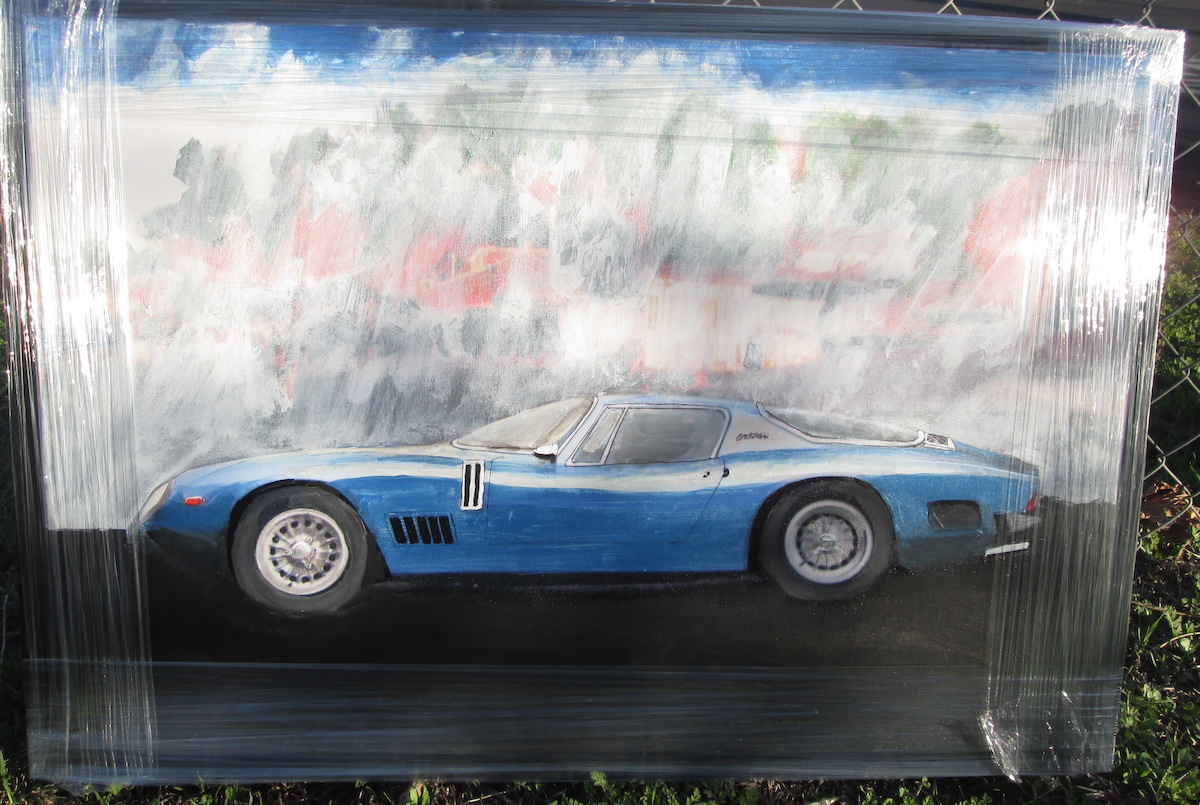

Useless, we all have cel phones.
And we all could drive minivans too.
Mike,
I agree with you 100%. Although I get about 12 different car magazines, I have yet to get my “collector car” (my holy grail would be a 1963 Split-Window Corvette Coupe), yet I own about 40 watches, including the two additional ones I purchased today.
Two Sundays ago, my girlfriend and I attended WatchTime New York, a NYC event sponsored by WatchTime magazine. We had never attended before (this was its tenth anniversary), and I asked one of the many vendors there who actually attends this event, jewelers, wholesalers, etc.? She said, no, actually this event is just for people who love watches. This event was at Gotham Hall, and it was packed with people, and the demographics of the crowd were males and females surprisingly much younger than us — mainly people in their 20s and 30s. So, despite everybody “having cellphones”, there are a great number of people who still appreciate a fine watch for both its usefulness and its attractiveness as a piece of jewelry or as a fashion accessory. The prices of the watches there ranged in value from $600 to $145,000 per watch, so there was a great variety.
I noticed there that every brand there had its own version/knockoff of the Rolex Daytona, so that goes to show how iconic that model truly is.
Other people have also made that connection between car fanatics and watch fanatics, sometimes in a flattering way, but, unfortunately, more often in a disparaging way, like we are all nutso!
I don’t think we are nuts, and I think that reading, seeing, and collecting cars and watches is more healthy and educational (on so many levels) than wasting one’s time watching some asinine reality show.
Glenn in Brooklyn, NY
All 12 astronauts who walked on the Moon were equipped with an Omega Speedmaster according to NASA.
Buster,
And, this Bulova as well:
“Dave Scott was among three crew members aboard the Apollo 15 in 1971 — just two years after the first and most famous lunar mission of 1969. Following a second round of NASA trials for watch candidates, the Speedmaster was selected again and issued to all astronauts. The crew was allowed to bring some personal effects, however, and it’s well established that Scott wore his Bulova-provided backup watch on the Moon after the crystal popped off his issued Speedmaster.”
Good story, thanks
That Ginault is a handsome watch. i especially like the dial color.
Thanks to one of Mike’s other articles about collector watches from spring, it reminded me of a Rolex watch that I have had in my possession for 43 years. I received it in trade for a temporary motel room rental fee, for less than $200, in 1982. I wore it occasionally but after a year, or so, it stopped working. At that time, It seemed a bit large and “fancy” with all of those dials, and even old technology compared to my then slim, digital Casio watch. I kept the Rolex in a cardboard box with other mementos that I’ve collected over the years and every decade or so I would come across it, admire it, and then put it back in it’s Rolex case and forget about it.
After reading Mike’s collector watch article I decided to have a look at my Rolex and see what model it was and if it was worth much more than I had paid for it 43 years ago. My initial online research seemed to show that it might be worth a whopping $35,000 which I could hardly believe. But after a few more hours of research it became clear to me that it was the identical model and look, white face with black dials, as the Paul Newman Rolex Daytona, 6239. I have since had it appraised by a few collectors and Rolex dealers. Unfortunately, there is a slight discoloration (mold) that is barely noticeable on the face, below the “6”, and that places this Rolex in the lower value range of $150,000-200,000.
The watch is currently being repaired and it should be on my wrist by Nov. 07.
Like the comment above from Juvenal, I too was satisfied with my cell phone’s watch and have not worn a wrist watch in many years. But over the past months i have watched countless videos on watches and like my appreciation for classic cars, i have found a new appreciation for watches. I am attempting to purchase a new Rolex to wear as a daily watch and leave the Daytona for special occasions. But try purchasing a new Rolex from an AD…I may bite the bullet and purchase a new Rolex (AD price of $6.300) for $8-9,000 on the secondary market.